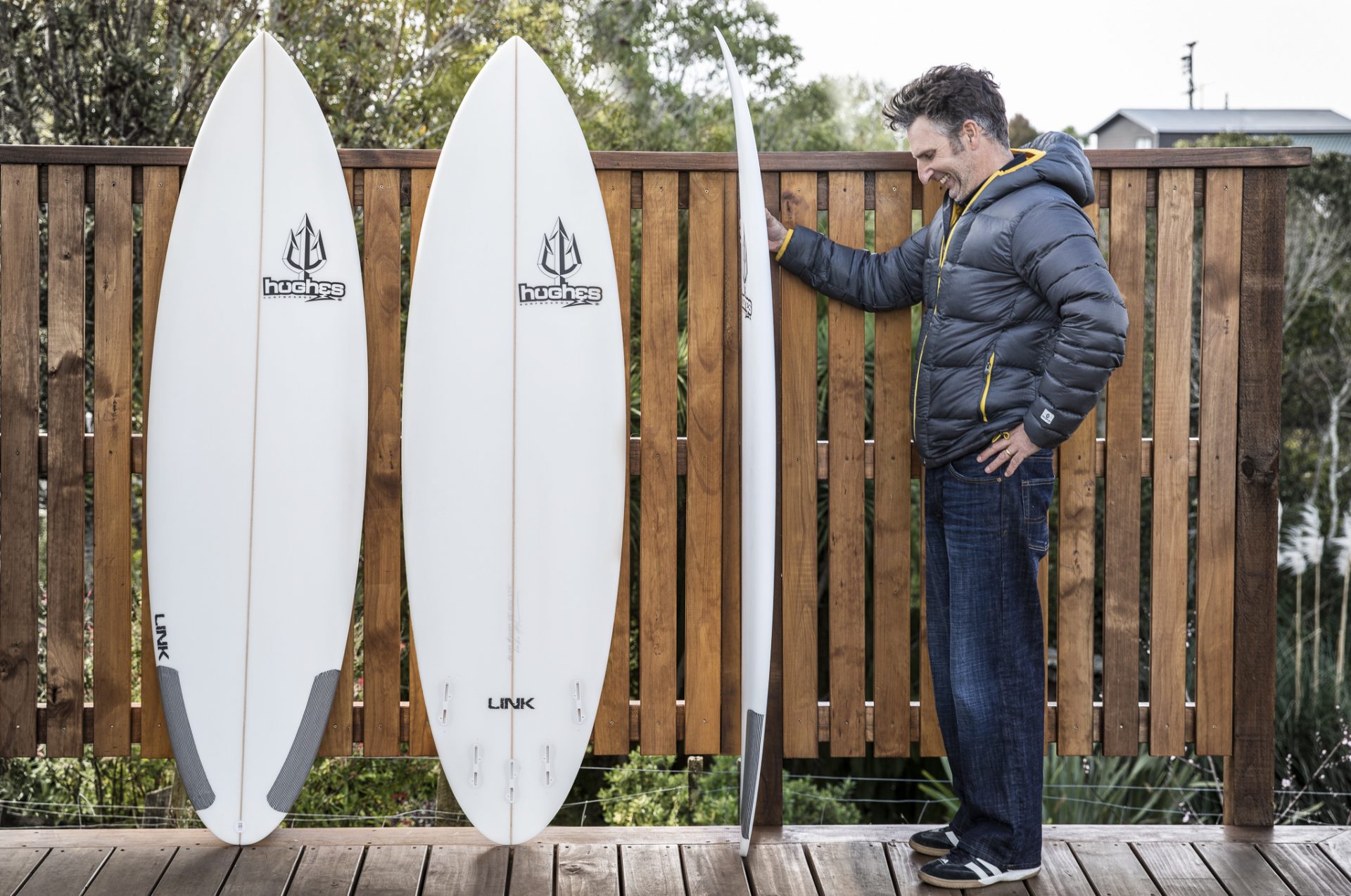Hughes Surfboards, Link model, is the result of multi-generational shaping minds, but is this the board that’s been missing in your surfing journey? We send the 40-something-year-old Derek Searancke out on one to find out.
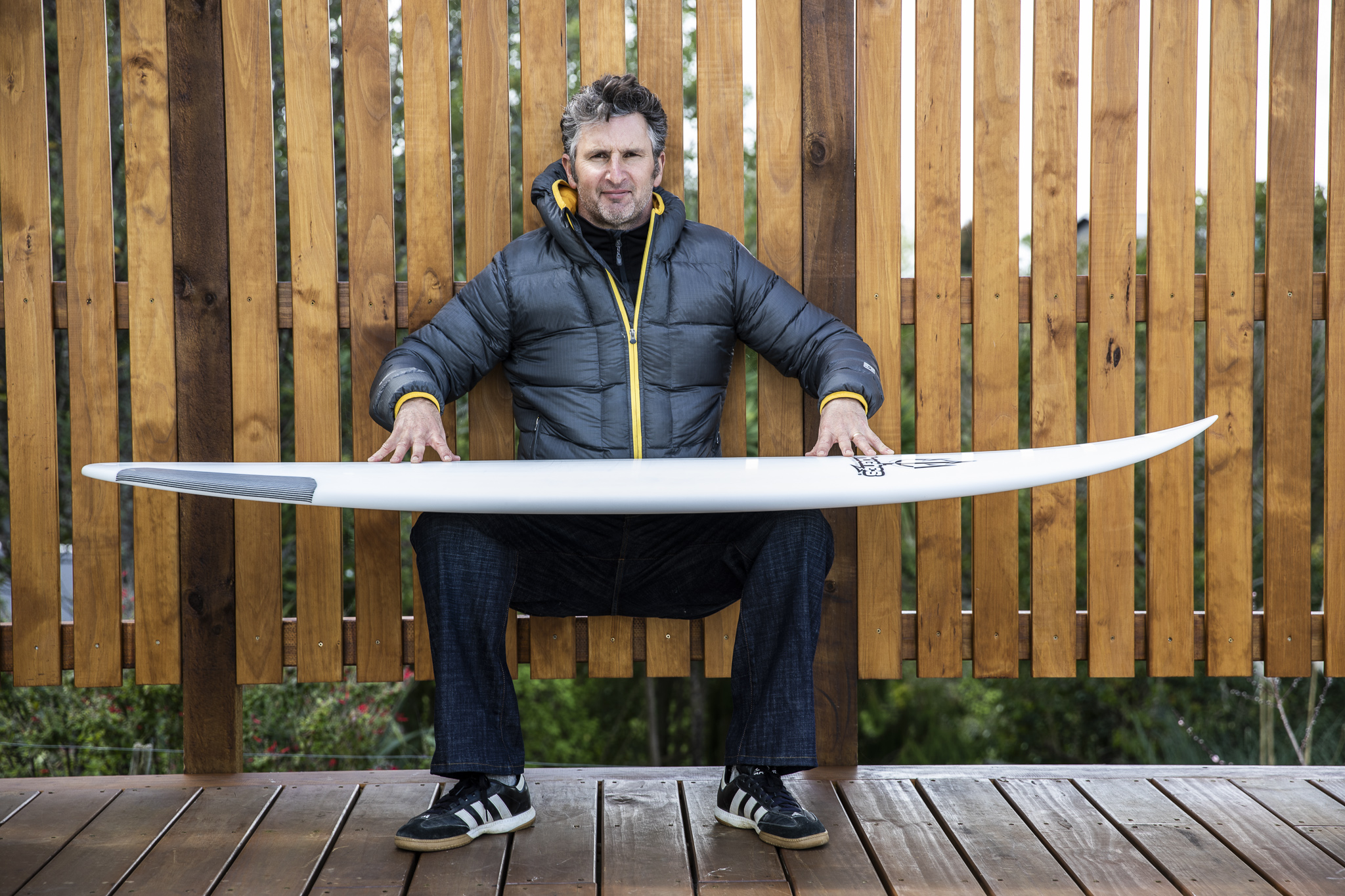
My scenario is not uncommon among a generation of surfers entering their late 40s. Given adult responsibilities, time constraints and the physical ravages of time what should I be riding to maximise my wave count while not sacrificing performance?
This was the question I posed to accomplished waterman and master shaper in his own right, Luke Hughes, of Hughes Surfboards. I met him at the Raglan Surf Co, which he runs alongside the shaping business.
There was a time when you could barely get a grunt out of the red-eyed, salt-encrusted teenager behind the counter at your local surf shop, but times have certainly changed. As I sipped on my single shot Allpress Espresso flat white, brewed in-house, we ventured up to the board room for a consult.
Luke’s about building relationships and continued refinement through feedback. He recognises that if he can pair you up with the right equipment he will have a repeat customer for life. To put him in a position to do this we have a frank conversation about my surfing background including fitness levels, body mass index, where I surf, how I surf, what I’m currently riding and where I’m looking to take my surfing.
This information allows him to recommend one of multiple stock models, which can then serve as a baseline to be customised in future if required.
I’m 47 years old, top out at 6ft, weigh in at 84kg – an average surfer blessed with good health. As I enter the latter stages of a lifelong surfing pursuit I’m definitely getting slower. I’m relying on increased volume, positioning and experience in reading a lineup to get my quota of waves. Paddle power and the ability to get into waves early are top priorities for me in choosing a surfboard.

Luke’s recommendation was the Link at 6’4″ x 20 1/2″ x 2 5/8″ for a 36.7litre displacement. The Link starts from $900 and is designed to give intermediate surfers an advantage in the take-off zone, while retaining the feel of a shortboard. This design has a fuller plan shape and added width and volume for maximum paddling power.
The board I’m holding is the stock model with rolled deck, low boxy rails and double concave available in a range of lengths from 6’0″ to 6’8″. It’s a five finbox set up that I decide, with Luke’s help, to ride as a thruster with large FCS Performer fins.
I’m finding myself stroking in early with confidence and navigating sections I previously would not have made. As a result of that I’m approaching sections earlier with speed to burn and that opens up a range of turning possibilities previously unavailable to me.
I now have more than a month of waves on this blade and, well, I’m a convert.
As the surf population multiplies and lineup pressure increases I’m amazed at the number of surfers of my generation fumbling around on equipment that’s well beyond them. No hope take-offs and blown sections are all too common meaning not much actual “surf riding” – the reason we’re all out there – is taking place.
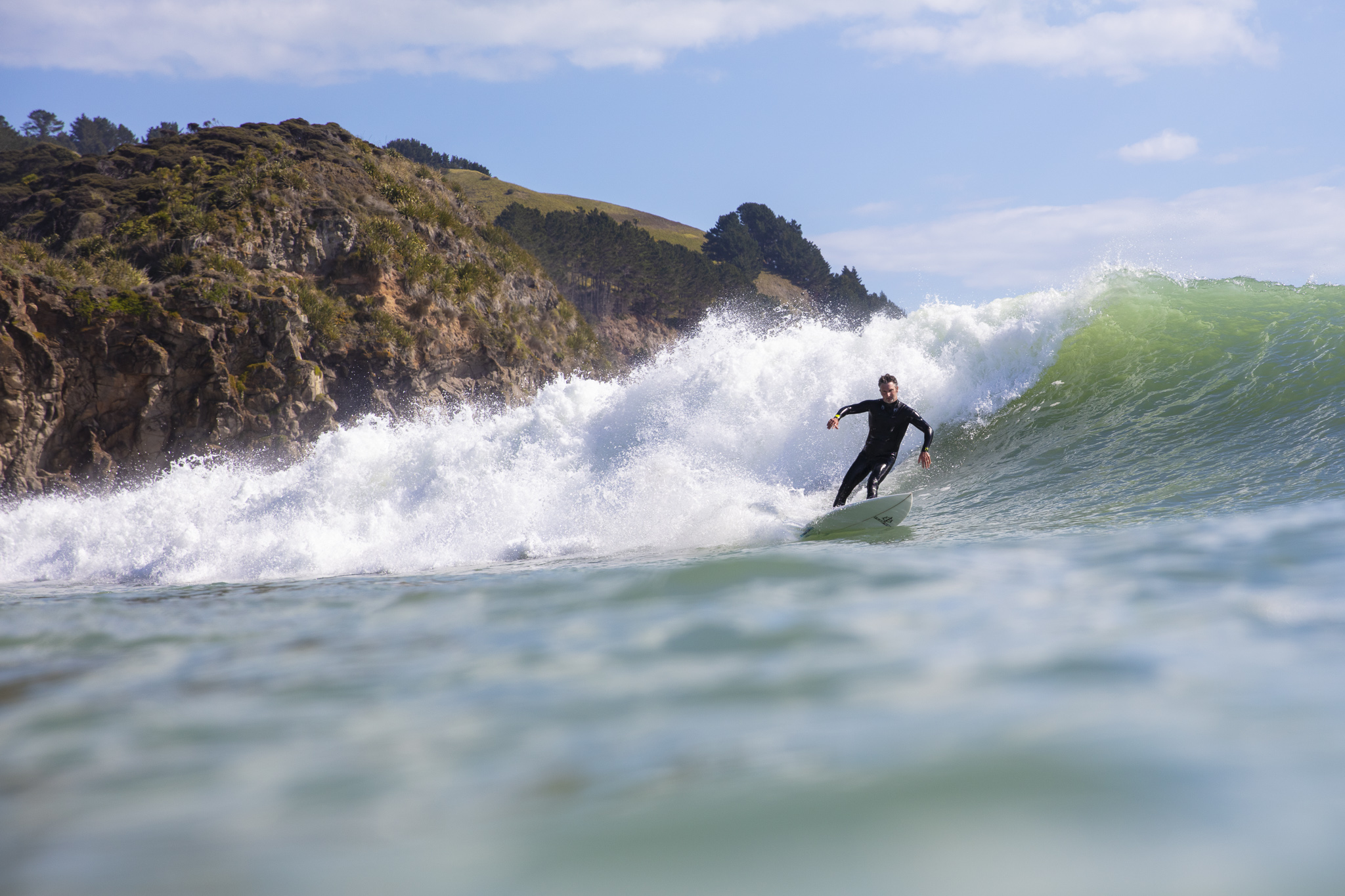
There were teething issues and it took two to three sessions to fully find my groove. Reining it in was my biggest challenge. With added volume and sharper rails than I was accustomed to riding, I initially struggled to harness this new found speed and responsiveness. I felt like the board was getting away from me.
However, with the benefit of more water time, combined with minor paddle and foot placement adjustments, I soon realised these characteristics were the board’s biggest strengths.
I’m finding myself stroking in early with confidence and navigating sections I previously would not have made. As a result of that I’m approaching sections earlier with speed to burn and that opens up a range of turning possibilities previously unavailable to me.
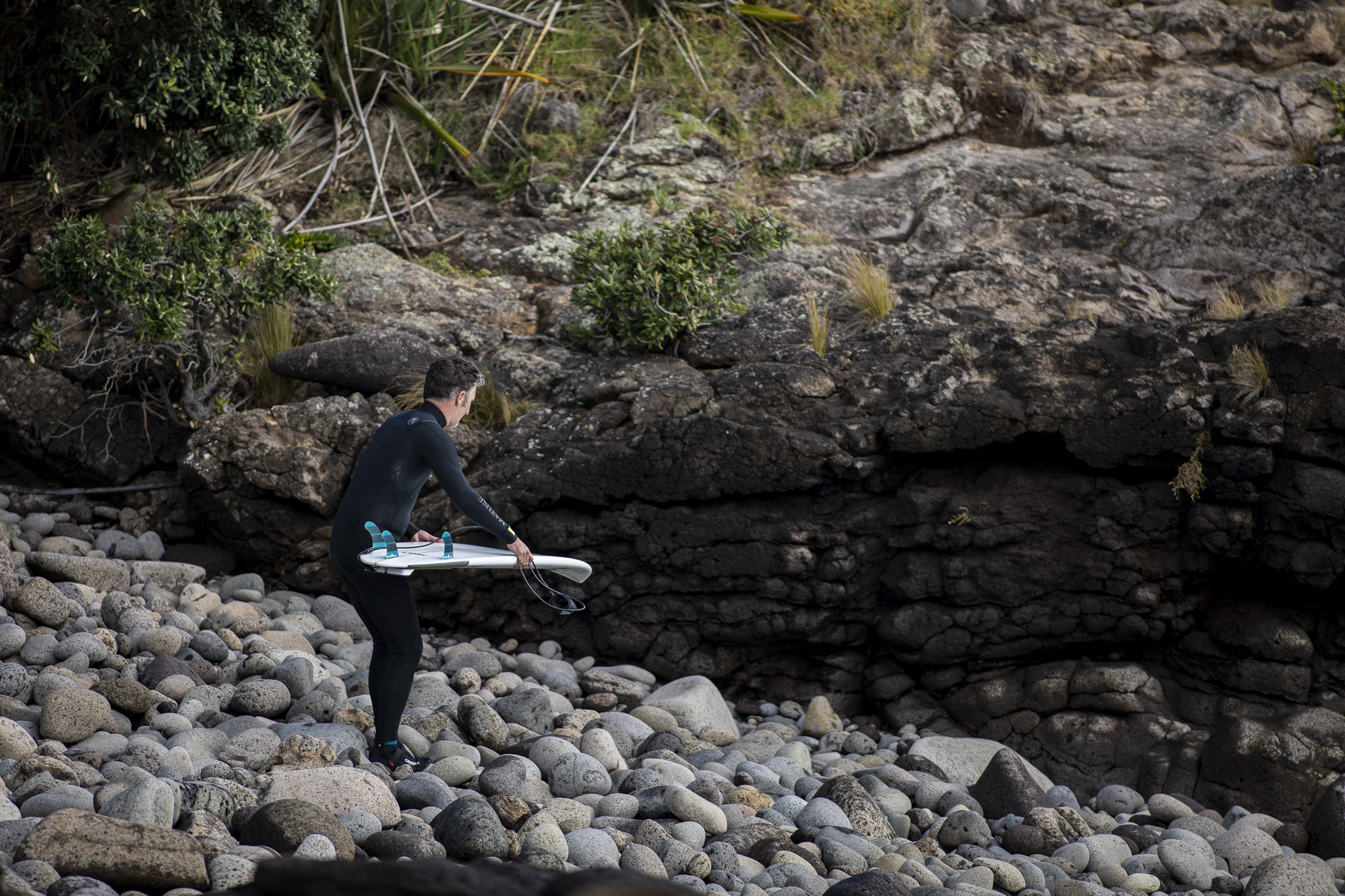
Living and surfing in Raglan exposes me to a range of wave conditions right through the gamut. Ideally you need a quiver here, but this board has surprised me with its versatility. It feels right at home in a range of conditions and swell sizes right up to 6 foot. In my experience step-up equipment is mandatory when the swell heads north of 6 foot .. and that’s where the mental side of surfing takes precedence.
To be fair and balanced I’ve also had some shockers on it, but to me that’s surfing at any level. Our canvas – the wave itself is ever-changing, which, for me, is the opiate in the surfing drug and the fundamental reason I continue to paddle out.
I don’t know if a one-size-fits-all surfboard exists, but for me, at this stage in my own personal surfing evolution, the Link ticks the majority of boxes. I’m loving every minute on it.
That doesn’t surprise me when I consider that the Link is the legacy of two generations and nearly 60 years of combined shaping experience and refinement between the late Craig Hughes and his eldest son Luke. The research and development has already been done. It feels good to benefit from that through the board beneath my feet.
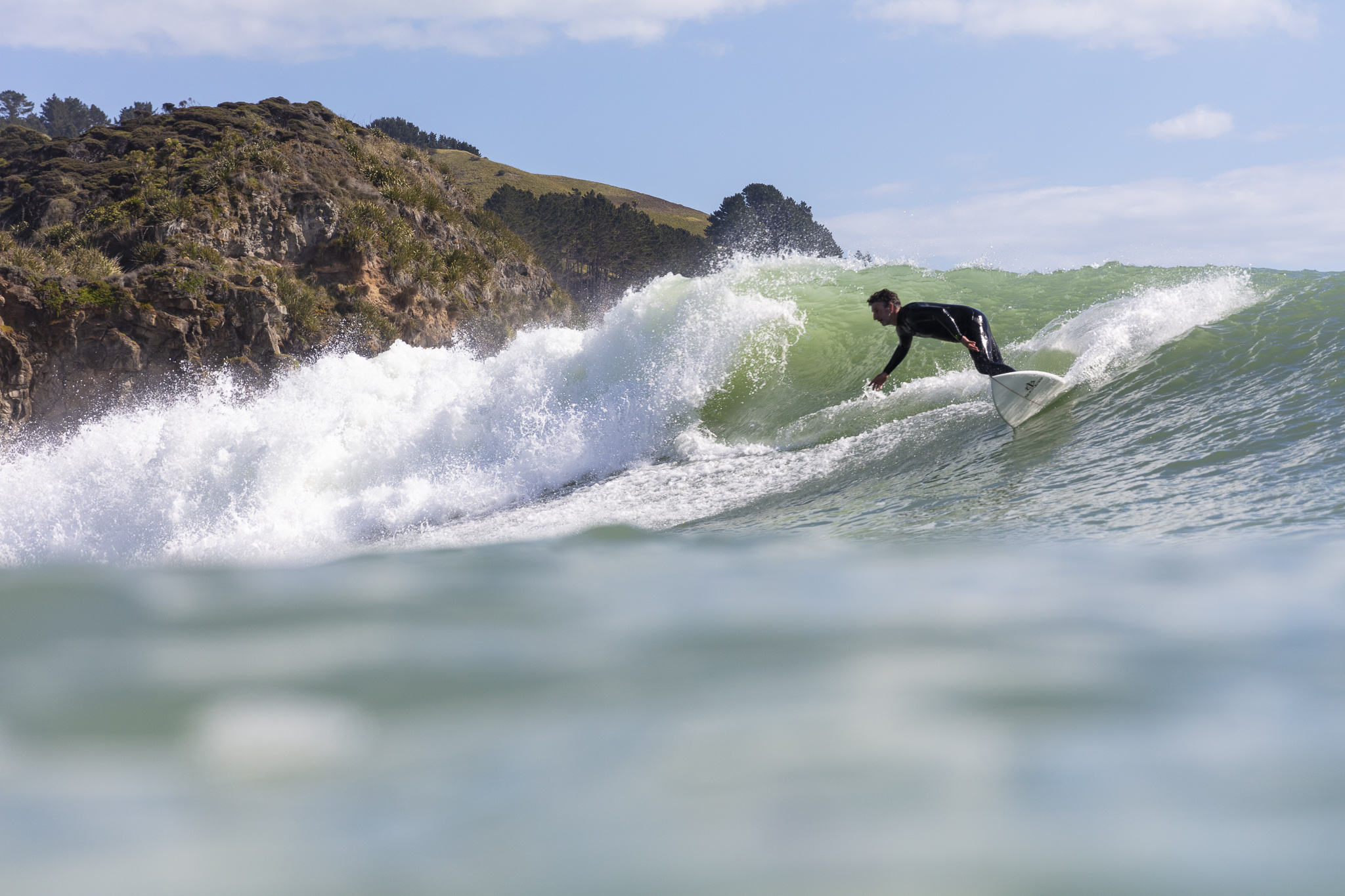
Best Suited To:
The Link model shaped by Hughes Surfboards is best suited to a wide range of surfers, but two distinct groups will thrive on it. The first are the 35-55-year-old surfers who let life get in the way of their surfing. They’ve had an epiphany and now the importance of surfing is higher up the list for them. They used to rip, or at least handle themselves well in a lineup, but have returned to discover that board design has shifted completely. For them the Link will offer a forgiving, paddle-friendly board that will still allow them to throw some tail.
The second group are those surfers coming off their first mals, longboards, funboards and retro-shapes. They may be new to surfing, or early in their journey and wanting to explore the high-performance end of boards without compromising wave counts. The Link will help them bridge that gap.
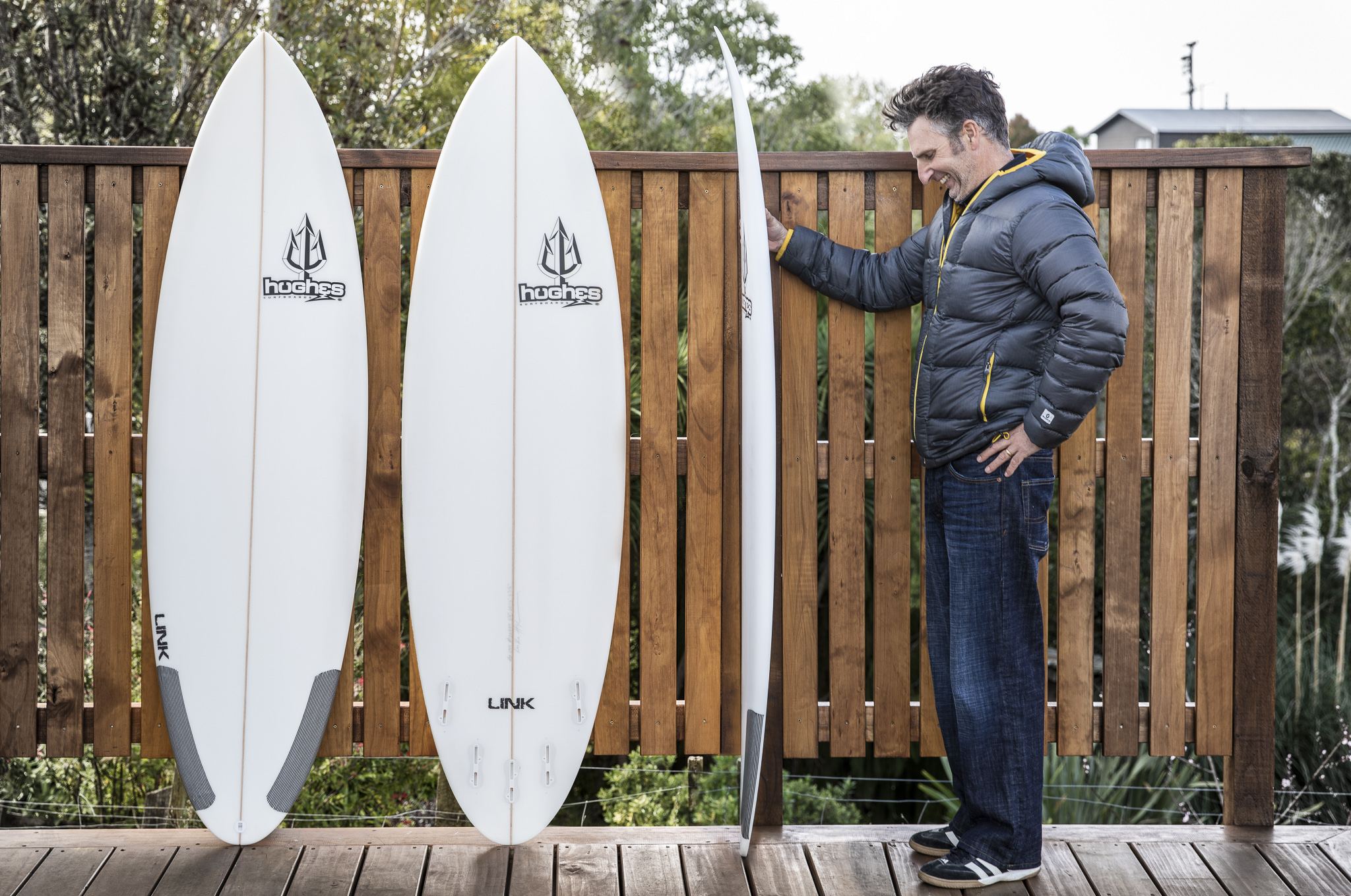
Summary:
The Link is the missing link between where many surfers want to be and where they actually are. What Craig and Luke have created is an all-rounder that is forgiving yet up for anything under the right surfer’s feet. It inspires confidence and in a lineup like we have in Raglan that can make all the difference.

